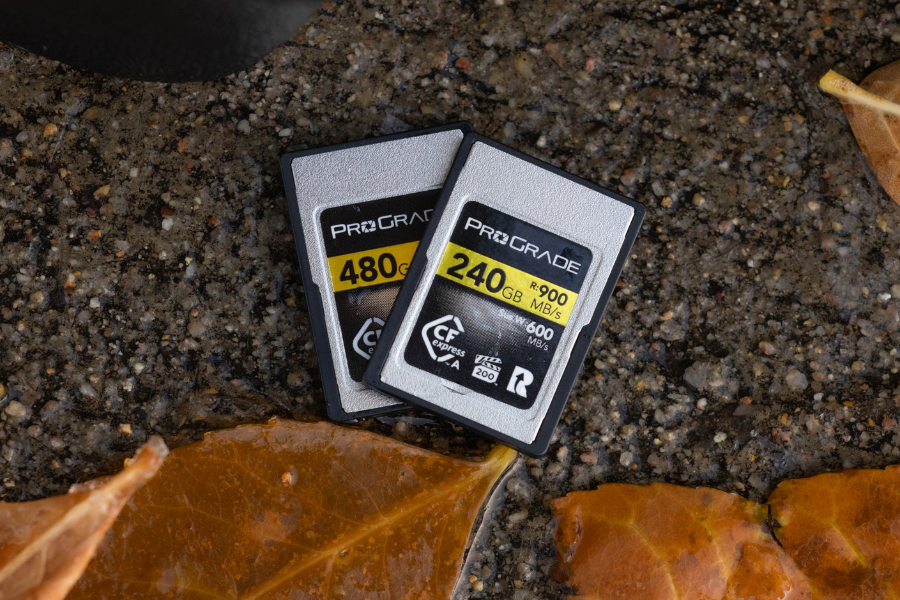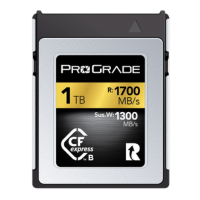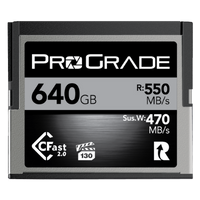Venturing into the realm of high-definition video recording requires more than just a camera—it demands a memory card that can keep pace with your creative aspirations. That said, navigating the intricate landscape of memory cards can be as bewildering as it is essential. Every manufacturer seems to have its own lexicon for describing performance, creating a maze of technical specifications.
Fortunately, amidst this confusion, standards like Video Performance Guarantee (VPG) emerge as guiding beacons. In this guide, we delve into the world of VPG ratings, focusing on VPG 200 and VPG 400 to showcase a comparison between mid-range and high-end performance levels. Over the following sections, we’re unraveling the nuances that set these ratings apart, empowering you to make an informed decision tailored to your unique video production needs.
Deciphering VPG Ratings: The Power of Sustained Write Speed
Video Performance Guarantee (VPG) ratings stand as critical benchmarks, offering insight into a memory card’s ability to maintain a sustained write speed during video recording. The VPG rating is shown on certified cards by the number inside a tiny clapperboard icon. But what exactly do these numbers signify, and why should they matter to videographers and content creators?

ProGrade Digital CFexpress™ 2.0 Type A Memory Card (160GB) with a Video Performance Guarantee (VPG) rating of 400MB/s.
At its core, a VPG rating represents the minimum guaranteed sustained write speed in megabytes per second (MB/s) that a memory card can consistently deliver. For example, the number 200 inside a clapper assures the card’s write speed will never drop below 200MB/s, and the number 400 inside a clapper (as seen in the image above) ensures the card’s write speed will never fall below 400MB/s. This metric is particularly significant during video recording, where uninterrupted and smooth data flow is paramount.
The sustained write speed directly correlates with a memory card’s capacity to handle high-definition video recording without dropframes or unexpected stoppages. In essence, a higher VPG rating ensures that the memory card can meet the demanding data transfer requirements of tasks such as 4K or 8K video capture.
VPG certification involves rigorous testing to confirm that the memory card consistently meets or exceeds the minimum sustained write speed specified by its VPG rating. This meticulous evaluation guarantees that the card can reliably sustain the required data transfer rate, vital for maintaining video quality during recording.
Video quality hinges on the card’s ability to keep up with the continuous stream of data generated during recording. A memory card with a VPG rating aligned with the recording specifications of your camera ensures optimal performance, reducing the risk of data bottlenecks that could compromise video quality.
Next, we’ll explore the distinctions between two prominent VPG ratings—VPG 200 and VPG 400—shedding light on how these numbers translate to real-world benefits for your video production endeavors.
VPG 400 vs. VPG 200: Technical Differences Unveiled
The disparities between VPG 400 and VPG 200 lie in the technical intricacies that define their performance. Understanding these differences is instrumental in making an informed decision tailored to your video production needs.
VPG 400
This high-end rating ensures a minimum sustained write speed of 400 megabytes per second (MB/s). It caters to the most demanding video recording scenarios, such as 8K video capture, where a rapid and consistent data transfer rate is essential.
VPG 400-rated cards are ideal for videographers working with ultra-high-definition formats, offering the necessary bandwidth for top-tier resolutions and bitrates. VPG 400 cards are the go-to cards of professionals engaged in commercial video production requiring the highest resolutions and bitrates, such as cinematic film projects, high-end commercials, or any scenario demanding uncompromising video quality.
VPG 200
Positioned as a mid-range alternative, VPG 200 guarantees a sustained minimum write speed of 200 MB/s. While lower than VPG 400, it remains adept at handling all FullHD and 4K Video related tasks efficiently.
VPG 200-rated cards are well-suited for projects where slightly lower resolutions or bitrates suffice, striking a balance between performance, versatility, and budget.
Choosing the Right Memory Card: Is VPG 400 or VPG 200 for me?
Think of your camera’s memory card like a super-fast transcriber trying to capture every word a speaker says. When the speaker talks, the transcriber must quickly write down each word precisely as spoken by the speaker. Now, some transcribers are really good at this, typing a lot of words per minute. Others, well, not so good. They get the job done if the speaker talks slowly but struggle the moment the speaker speeds up.
Once the number of words spoken per minute surpasses the number of words a transcriber can type, problems emerge: the transcriber starts playing catch-up, mistakes appear in grammar, and words get lost altogether.
Just like a transcriber starts missing some words when a speaker talks too quickly, a memory card with a low sustained write speed starts missing frames of your video when these frames get too data-intensive. This can lead to inferior-quality recording, or in worst cases, the recording might stop completely.
This can be a big headache, especially when recording something meant to be captured in one continuous shot or when shooting once-in-a-lifetime events where there are no retakes. All that does not mean you should always opt for VPG 400-rated memory cards and ignore the VPG 200-rated ones. It just means having a memory card with good sustained write speed is paramount in the realm of high-definition video recording to preserve the integrity of your visual narrative.
In short, whether you should go with VPG 400 or VPG 200 boils down to video data rate. The data rate (also called bitrate) refers to the amount of data a video carries per unit of time. The higher the image quality, the higher the data rate, and the greater the amount of information your memory card needs to record consistently.
The video data rate is usually measured in megabits per second (Mbps). This tells you exactly how many bits are written to the memory card each second. Knowing that makes decision-making pretty straightforward. Simply look up how data-intensive what you are about to shoot is and choose accordingly. Just make sure to leave a little headroom.
If the data rate of this format that you shoot stays way below 200MB/s, go with the VPG 200 card; if it’s above or very slightly below, opt for a faster card.
Keep in mind: The video bitrates are generally measured in bits, but memory card speeds are usually given in bytes. They are not the same. So, to accurately compare the two, you must convert the data rate from megabits per second (Mbps) to megabytes per second (MBps or MB/s). That conversion is easy to do yet equally easy to overlook, which is why many fail.
Here’s all you need to know: 1 byte = 8 bits. So, divide megabits per second (Mbps) by 8, and you get megabytes per second (MB/s).
Camera Compatibility: A Key to Choosing the Right Card
Compatibility between VPG 200 and VPG 400-rated cards and cameras is not necessarily reciprocal. While a camera that supports VPG 400 should generally be compatible with VPG 200 cards, the reverse is not always true.
Some cameras may have specific requirements or recommendations regarding the minimum VPG rating for optimal performance. Therefore, it’s important to check your camera’s specifications and guidelines to ensure that it is compatible with the specific VPG-rated card you plan to use.
This attention to camera compatibility guarantees that your chosen memory card aligns seamlessly with your camera’s capabilities, facilitating a smooth and reliable videography experience.
Final Words: VPG 400 and VPG 200
There you have it. That’s all there is to know about Video Performance Guarantee (VPG) ratings. We hope this article did shed enough light on the subject for you to choose wisely, capture boldly, and let your videography shine with the assurance of a well-informed decision.
Professional-Grade Memory Cards
If the uninterrupted workflow is mission-critical to you, consider ProGrade Digital CFexpress Type A Cobalt Memory Card with a VPG 400 rating or the ProGrade Digital CFexpress Type A Gold Memory Cards with a 200 VPG rating. Created specifically for professional cinematographers navigating data-intensive landscapes of 4K, 6K, and 8K video.
Still undecided or need more help?
Our friendly staff is always ready to assist you in selecting the best memory cards for your specific use case, and they are just a click away.





